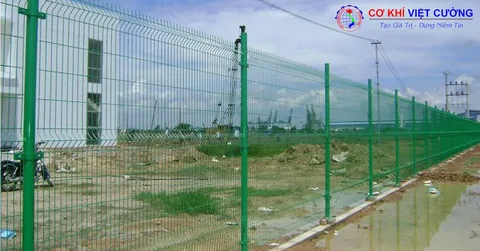Temporary fences are often used for construction sites, outdoor events, and property protection. While these fences are designed to be durable, they still require regular maintenance. Your temporary fence might need more care due to weather conditions, improper installation, wear and tear, or neglect.
Other reasons could include inadequate securing methods and damage from heavy traffic. It’s important to understand these factors to ensure your fence remains effective. For expert help, you can always rely on temporary fencing contractors to get the job done right.
Table of Contents
Signs Your Temporary Fence Needs More Maintenance
Here are the common reasons why your temporary fence needs more care:
1. Weather Conditions Impact the Fence
Temporary fences are often exposed to harsh weather, including rain, wind, and extreme temperatures. These conditions can cause the fence to weaken, rust, or shift out of position.
- Wind: Strong gusts can topple lightweight fences, causing them to bend or even break.
- Rain: Prolonged exposure to rain can cause metal fences to rust or wooden fences to rot.
- Cold/Heat: Extreme cold or heat can cause materials to expand and contract, leading to cracks or weakening of the structure.
Regular checks and maintenance after severe weather are important to keep the fence in good condition.
2. Improper Fence Installation Leads to Problems
Another reason your temporary fence may need more care is improper installation. If the fence posts are not properly anchored into the ground, they may shift or fall over with time. Similarly, using the wrong materials for the ground conditions can cause problems.
- Loose Posts: Ensure that fence posts are securely installed to prevent wobbling or falling.
- Inappropriate Materials: Certain materials may not hold up well in specific environments (e.g., wood in wet conditions).
Hiring temporary fencing contractors can help ensure the fence installation process is done correctly, preventing future issues.
3. Wear and Tear Over Time
Temporary fences are often used for several months or even years. Over time, constant exposure to the elements, people, and animals can cause the materials to break down. This wear and tear can weaken the fence, making it more susceptible to damage.
- Rusting: Metal fences are prone to rust, especially in humid or rainy environments.
- Cracking: Plastic or wooden fences can crack with age or excessive use.
Regular inspections and repairs can extend the lifespan of your fence, preventing more serious damage later on.
4. Damage From Heavy Traffic
High foot traffic or heavy machinery moving around the temporary fence can also cause damage. People may bump into the fence, causing it to lean or shift. Similarly, vehicles or equipment operating near the fence may cause structural damage, especially if the fence is not securely anchored.
- Shifted Panels: People and vehicles can push against the fence, causing it to move out of alignment.
- Bent Posts: Heavy machinery can pressure the fence posts, leading to bending or breaking.
Consider reinforcing the fence with additional supports or barriers to avoid these issues.
5. Lack of Regular Maintenance
Like any other structure, temporary fences require regular maintenance. Minor issues can escalate into major repairs if left unaddressed. A missing bolt, loose wire, or bent panel left unaddressed can lead to larger repairs.
- Loose Components: A bolt or panel can come loose and affect the entire structure.
- Structural Integrity: Neglecting to check the overall stability of the fence can cause it to collapse under pressure.
Performing routine checks will ensure the fence stays secure and functional.
6. Inadequate Securing Methods
SSometimes, temporary fences are not properly secured, making them vulnerable to winds or external forces. Inadequate securing methods, such as weak ties or improper weights, can also make the fence unstable.
Weak Ties: Poorly secured fences can move or fall when wind or people contact them.
Improper Weights: Using insufficient weights can cause the fence to become unsteady.
The right securing methods, such as high-quality ties and proper base weights, can prevent these issues. If you want a complete guide on choosing and maintaining these safety measures, check out our detailed article on navigating the NDIS to understand compliance and safety standards better.
7. Animal Damage
A temporary fence may suffer from animal-related damage in areas where animals are present. Pets, livestock, or even wildlife may push against the fence, chew on it, or cause it to collapse.
- Chewing and Biting: Animals may chew on wooden fences, weakening the structure.
- Pushing or Bumping: Large animals like cattle or horses may push against the fence, causing it to lean or break.
Ensuring the fence is built with materials that can withstand animal activity will help protect your investment.
Conclusion
A temporary fence might need more care than you initially think, especially when exposed to the elements, improper installation, or heavy traffic. Regular checks and proper installation can prevent major issues.
If you’re unsure how to maintain or install a fence properly, it’s a good idea to contact temporary fencing contractors for expert advice and assistance. Regular fence care ensures your temporary fence stays functional and secure, protecting your site or event.
Also read this: Decoding the Beachbody On Demand Membership


